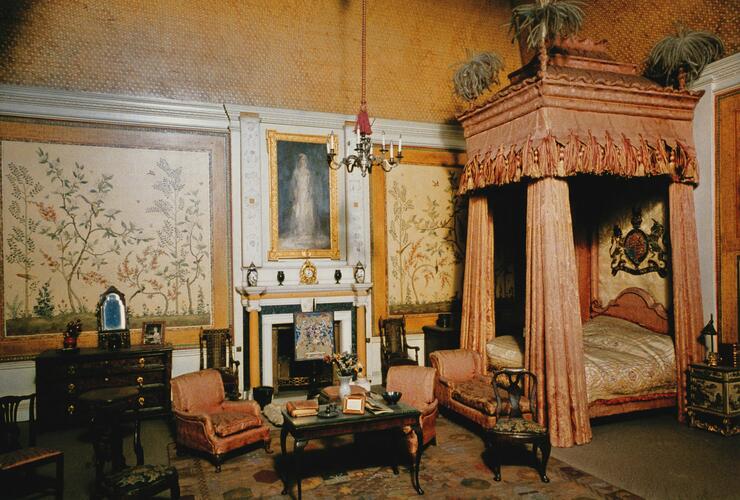-
1 of 253523 objects
Queen Mary's Dolls' House 1921-24
RCIN 231999

Sir Edwin Landseer Lutyens (1869-1944)
Queen Mary's Dolls' House 1921-24
Royal Collection Trust/© His Majesty King Charles III 2023. Photographer: David Cripps




-
Queen Mary's Dolls' House was created as a 1:12 scale miniature royal palace or town house as a gift from the nation to Queen Mary. The House, with a façade in the style of Sir Christopher Wren or Inigo Jones, is operated by a mechanism in the basement and lifts up entirely to reveal the house within, visible in the round. The House incorporates running water, electric lighting and working lifts. The idea behind the model was that it would be as true to life as possible, recreating every facet of modern-day life from the 1920s. It contains around 1000 miniature works of art. Princess Marie Louise, who was instrumental in creating the House, later said that the only thing that was not reproduced in miniature was the telephone.The House stands on a large plinth which is fitted with a drawer at one end to house the garage, complete with seven model cars and a motorcycle, and at the other with a garden designed by the famous designer Gertrude Jekyll.
The House was the concept of Princess Marie Louise, cousin to King George V and childhood friend of Queen Mary. She decided that the Queen, who loved all things diminutive and decorative, would enjoy the House and it was to become a symbolic gift to Queen Mary in the years after the First World War. The architect was Sir Edwin Lutyens, a friend of the Princess. Between them they created a committee who decided on the style of the House and ensured all its contents were of the highest possible quality and all perfectly to scale. The committee decided that the House should be a collaborative venture - the cost and labour to be divided between as many people as possible so that it became an enjoyable task.
As the House was intended to be shown at the Empire Exhibition in 1924 the committee realised that the model could become a show-case for British workmanship and the contents of the House were created by craftsmen from all over the country to show off the best arts and crafts of the day. Many of those who contributed were royal warrant holders. The contents of the House include not only furniture, silver, ceramics and textiles but also real items of food, soap, miniature Christmas crackers and a working bicycle. Every detail was recreated - the joints in the furniture are dovetailed, the sheets embroidered with the royal cipher, the chairs properly upholstered and the beds are sprung.
The House incorporates many reminders that it was made for a royal family - a complete set of miniature crown jewels is housed in the Strong Room; the opening bars of the National Anthem are painted in a flowery trellis on the ceiling of the King's Bedroom and a pair of miniature throne chairs sit in the Saloon. It also contains a number of objects which belonged to the Queen and which she added to the House after it had been presented to her. These include a miniature dolls' tea service in copper which was presented to Queen Mary by her mother, and a small model of a mouse made by the firm of Faberge.
The House is also a snapshot of the artistic and cultural life of the 1920s. Princess Marie Louise and Lutyens approached many of the artists, composers and writers of the day to contribute to the Library. The result is 588 miniature books ranging from the complete works of Shakespeare, the Bible and the Koran, to novels, poems and prose articles; over 700 specially-made watercolours, prints and etchings; and 24 miniaturised music scores. As an archive of the artistic life of the period it remains unrivalled.Provenance
Commissioned by Princess Marie Louise for Queen Mary, 1921-4
-
Creator(s)
(designer)Acquirer(s)
Commissioner(s)
-
Category